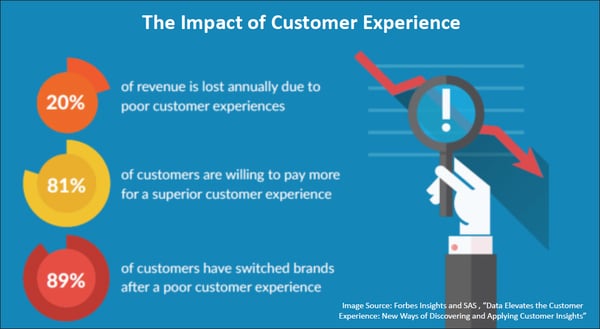We googled ‘Customer Experience’, and Google hit us back with 6.480.000.000 search results. But what does customer experience really mean? And shouldn't we be talking about the right experience instead?
There's no way the business impact can be underrated either. The statistics speak for themselves: customers will pay more for a better experience and there's a high chance they will spend their money somewhere else after a poor one.

“When it comes down to it there’s only one party who can tell you if strategic decisions have an impact. And that’s your customer.”

Subscribe to the Hello Customer newsletter and receive the latest industry insights, interesting resources and other updates.